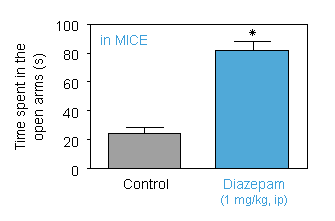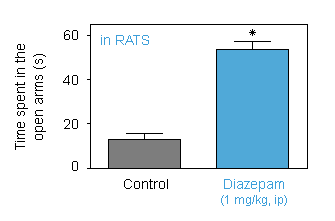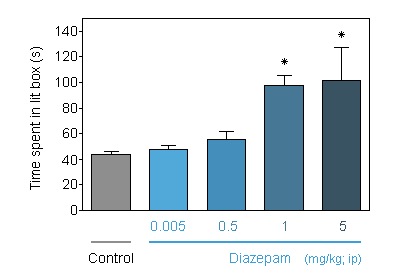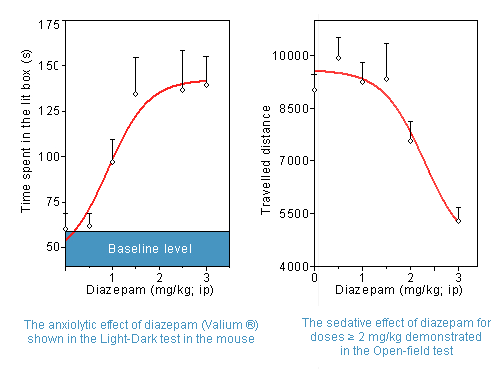ANXIETY
-
Anxiety can generally be defined as a response to a threat that causes nervousness and fear. In extreme cases, anxiety can have impacts on daily life and can be characterized by different symptoms for example panic attacks.
Spontaneous paradigm
The exploitation of the spontaneous paradigm is based on the natural preference and/or aversion of mice.
For example, the light/dark paradigm is based on a conflict between the innate aversion to brightly illuminated areas and the spontaneous exploratory activity.
-
Compound testing
Anxiolytic drugs are usually tested in this model but other treatments could also be considered. Please feel free to contact us to discuss the feasibility of your study.
-
Endpoints
☐ Entries/time spent in the open arms in the Elevated Plus Maze
☐ Time spent in the lit box in the Light/Dark test
☐ Number of marble buried in the Marble Burying test
The EPM situation rests on the conflict between the innate tendencies of rodents to explore novel environments and avoid open and brightly lit areas. |
-
MICE : 1 mg/kg diazepam induces a significant increase in the time spent in the open arms. -
RATS : 1 mg/kg diazepam induces a significant increase in the time spent in the open arms.
The light dark paradigm in mice is based on a conflict between the innate aversion to brightly illuminated areas and the spontaneous exploratory activity. If given a choice between a large brightly compartment versus a small dark compartment, mice spontaneously prefer the dark. |
-
Dose-response curve of diazepam-treated mice
in the Light-Dark test. -
Diazepam produces a dose-dependent reduction of time spent in the lit box, suggesting an anxiolytic effect.
Diazepam ≥ 2 mg/kg is associated with reduced locomotion in the OF
which suggests a sedative effect at doses higher than 2 mg/kg. -
This test has some predictive value for anti-depressant and/or anxiolytic drugs. |
-
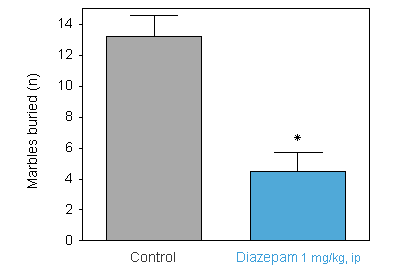
-
1 mg/kg diazepam significantly reduces the number of buried marbles in mice.
You could also be interested in
-
Depression
Reactivation of a juvenile-like plasticity in the brain for the treatment of depression.
Elevated Plus Maze
The EPM test is used to evaluate the relative anxiety status of mice or rats.
CCK-4
PANIC ANXIETY : the EPM test is used to evaluate the relative anxiety status of mice or rats.
-
Yohimbine
PANIC ANXIETY : the EPM test is used to evaluate the relative anxiety status of mice or rats.
Marble Burying
The MB test is used to record the number of marbles buried by mice placed in a novel environment.
Light-Dark
The LD test is used to evaluate the relative anxiety status of mice.

 Elevated plus maze
Elevated plus maze